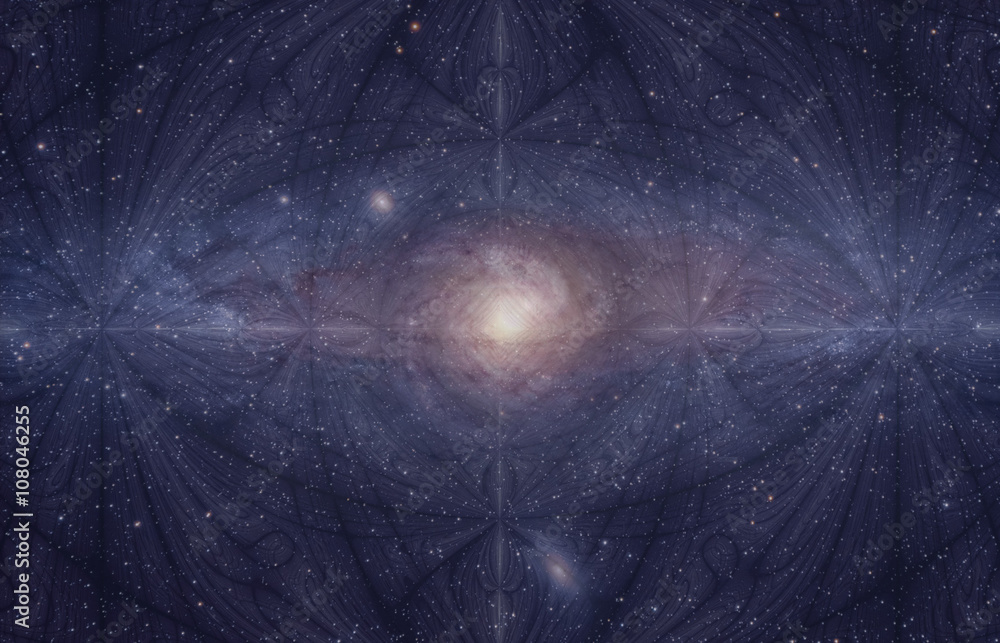
In the vast expanse of the cosmos, a question as old as human curiosity persists: why does the immense universe, speckled with countless stars, present us with a night sky draped in darkness?

Skywatcher Esprit 100/550 ED, Skywatcher Flattener, IDAS LPS V4, ASI 294MC Pro
OAG with Lodestar X2
Mount AZ EQ6 GT
Image acquisition: CdC, APT, PHD2, dithering
27 x 900s, gain 120, offset 30, -10C, 30 flats, 30 darkflats, 28 darks
Data calibration/integration: PixInsight
Image processing: PixInsight, StarNet++, Photoshop, Lightroom
Bicolor processing: Ha=R, O3=G/B
This enigma, which stumped thinkers from Leonardo da Vinci to the English scientist Lord Rayleigh, finds clarity in the interplay of light and the universe’s architecture.

The blue of our Earthly skies owes its beauty to a dance of sunlight and atmospheric particles. Rayleigh’s scattering theory, formulated in the 1870s, tells us that air molecules scatter shorter blue light waves more effectively than the longer waves of red.

This scattering sends blue light in all directions, painting the sky with its azure hue.

At sunrise and sunset, the extended journey of sunlight through the atmosphere filters out blue light, leaving us with the warm glow of reds and oranges.

Yet, this scattering only occurs within Earth’s atmospheric embrace, for in the vacuum of space, no such particles exist to perform this light ballet, leaving the sky’s canvas pitch black.

The puzzle of space’s darkness, known as Olbers’ paradox, has intrigued astronomers for centuries.

Despite an estimated 200 billion trillion stars dotting the observable universe, many of which shine with a brilliance rivaling or surpassing our sun, the celestial dome above remains shrouded in darkness.

The answer lies partly in the finite age of the universe, a mere 13 billion years young by cosmic standards. This means that the bubble of observable stars, whose light has had time to travel to Earth, extends only so far. Many stars simply reside beyond this cosmic horizon, their light yet to grace our skies.

As we peer into the night, we find pockets of darkness not because stars are absent, but because their distant glow has not reached us.

Moreover, the universe’s expansion adds a layer of complexity to this stellar riddle.

As galaxies drift away from us at speeds approaching that of light, their starlight stretches into wavelengths invisible to the human eye, a phenomenon known as the Doppler shift. This cosmic redshift ensures that even if the light from the furthest stars had the time to voyage to our planet, our eyes would remain blind to their radiance.

As eons pass, the night sky will not brighten but instead grow dimmer. Stars, including our own sun, have lifespans, and as they exhaust their nuclear fires, they will fade to embers. Astronomers project that, in a distant future measured in thousands of trillions of years, the universe will enter a somber state, where only the remnants of stars, such as white dwarfs and black holes, will linger in the silence of an endless night.

Yet, the story of space’s darkness is not solely one of absence and distance; it is a reminder of the unique epoch in which we find ourselves. For now, we are the fortunate witnesses to a cosmos alive with stars, a night sky awash with light and shadow, offering a glimpse into the universe’s profound and intricate nature.

As we gaze upon the heavens, we are reminded of our place within this grand cosmic tapestry, a testament to both the limits and the wonders of our celestial home.

Relevant articles:
– Why is the sky blue on Earth, but black in space or on the Moon?, Union University
– Why is space so dark even though the universe is filled with stars?, The Conversation
– Why is space so dark even though the universe is filled with stars?, The Conversation
– Why Is Space So Dark Even Though The Universe Is Filled With Stars?, Discover Magazine
